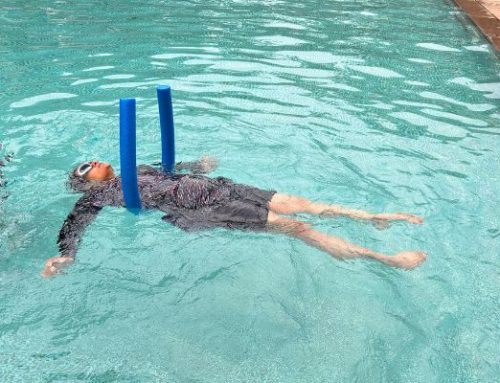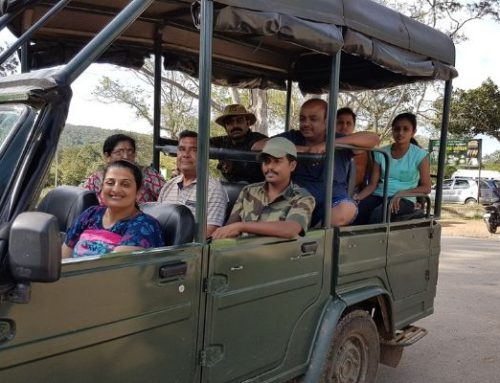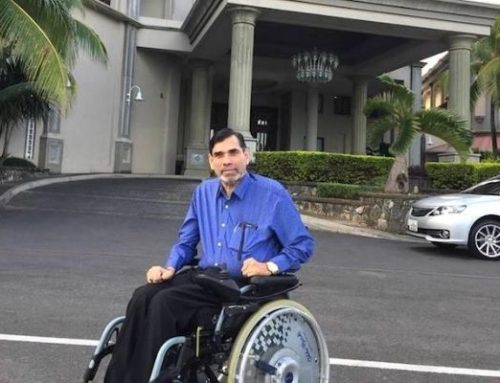“Tips for wheelchair users travelling by Air”
For long distance journeys I’ve always found travelling by air to be the most convenient. It is not only the fastest way to commute but also the only accessible public transport available if you are a wheelchair user living in India. We cannot just roll-in with our wheelchair at a bus or a train station and expect ramps to get inside. A marked space to park a wheelchair inside the bus or train is a far-fetched dream.
Most airports in India are easily accessible in a wheelchair and many airlines have trained their staff to handle passengers with disabilities. If you have never travelled by air before then the thought of your first flight can be overwhelming. Today I will take you through things to take care of before taking the flight and when actually travelling.
Planning your travel
You can book tickets from any travel portal such as Make my trip or Cleartrip, individual website of the Airline or approach a travel agent to make the reservations on your behalf. The key takeaway is that you must plan the travel as much in advance as possible to get the benefit of lower fares.
Identifying yourself as a wheelchair traveller
It is always best to inform the airline about your wheelchair requirement in advance i.e. as soon as you book the ticket. This will ensure that the staff is prepared to receive you and have alerted the relevant team members. You could be in any of the below categories:
- WCHR – Passengers who can ascend and descend steps and move in the aircraft cabin but who require a wheelchair for distance to/from the aircraft
- WCHS – Passengers who cannot ascend and descend steps, where the wheelchair is required to/from the aircraft and the passenger must be carried up/down the steps but is able to make their own way to/from cabin seat
- WCHC – Passengers who are completely immobile and require a wheelchair to/from the aircraft and must be carried up/down the steps and to/from their cabin seat
Blocking seats in advance
Because of safety issues we cannot use our own wheelchairs inside the aircraft. We will have to shift to the aircraft seat. Some people are comfortable sitting in an aisle chair- a narrow wheelchair with four caster wheels that goes right inside the aircraft. Then you can shift on the aisle seat of any row. Since I am paralysed below my shoulders, I find it extremely difficult to sit on the asile chair for longer durations and be carried in it from one place to another. Also almost none of the aisle wheelchairs available with airlines in India have proper seat belts that can make you feel secure. Hence, I prefer to take my own wheelchair up to the cabin. From there the airline attendants help me to shift to the seat in the front row.

Seated inside an aircraft with mom
Selection of an airline is an important aspect based on how you will shift into the seat of the aircraft. For example if the airline has business class in the beginning, then there is no option but to use aisle chairs to reach the economy class seats. No prizes for guessing that I avoid airlines such as Air India because of this. Indigo and SpiceJet are better because they have regular seats from the first row. Although at a premium cost, they give travellers an option to block desired seats at the time of booking tickets.
Packing your bags
Make a checklist of all the stuff that you use or require on a daily basis so that you don’t forget essential items such as suppositories. The maximum weight of the luggage that you can check in is 15 kgs. If your bag weighs more than you will have to pay extra, approximately Rs 500 for every additional kilogram.
The weight of your handbag can be 7 kilograms. Do not keep any liquid or pointed objects such as nail cutters in your handbag. Otherwise you will have to throw these at the time of security check in.
In addition to the above, you can carry a laptop bag and wheelchair at no additional cost. Although the airline staff will ask you for the weight of the wheelchair-it will not be added to the overall limit and you will not be charged for it.

A breakup of luggage I carry when travelling
Managing bladder and bowel
If you practice intermittent catheterisation (CIC/ ICC), then reduce your intake of fluids a few hours before the flight and make sure you clear your bladder before getting onto the flight. To be on the safer side and avoid inconvenience I always switch to an indwelling catheter (IDC) when travelling. This way I can drink as much water as I want and not worry about finding a place to do my CIC. The air-conditioning inside the aircraft can also dehydrate you if it is a long flight.
Diapers are a must if you have a spinal cord injury and do not have control over the bowel movement. On most days eating a high fibre diet and suppositories will do the trick of managing motion in a timely manner. However, if you are unsure best is to take enema and clear the bowel before your travel. I used to do this in my initial years of the spinal cord injury for international travels that could last as long as 22 hours.
Entering the airport and checking in
All airports have an outside counter by the airlines where you can request for an attendant if you’re a wheelchair user. They will either bring their own wheelchair or help you with yours.
Before entering the airport, the CISF security guard will ask for your ticket and identity card. You can show them a saved copy of your ticket on your phone or keep a printout handy.
Then head over to the airline counter to check in bags and collect your boarding pass. Make sure your power bank is not inside the checked in baggage, because it is required to be kept in hand baggage only. At this juncture the airline also sends your wheelchair for a security check, if you’re willing to shift to the airline wheelchair or have an additional shower wheelchair.
Going through the security check
You can go through the security check in your personal wheelchair as well. The Bureau of Civil Aviation Security has released a directive for security screening: Bcas circular no. 4/14, and have followed it up with an appendix from October 2017, mentioning that a wheelchair needs to go through the x-ray scanner only if there is reasonable doubt. It basically means that if you cooperate with the security staff, let them to a pat down check followed by ETD of the wheelchair-you can be cleared to go ahead.
If you have a motorised wheelchair, then as per AVSEC Order no. 5/2005 by Bureau of Civil Aviation Security, you can also carry your non-spillable/ Lithium battery inside the cabin. I always fold my motorised wheelchair after boarding the aircraft and before handing it over to the crew for keeping it in the hold area. As a result I have to remove the battery and keep it in a separate bag. Once the cover of the battery was broken because of mishandling by ground staff. On another occasion my battery bag did not make it to the destination and I had to spend a day without it. Which was very difficult. Hence I always prefer to carry the battery inside the cabin me.
Boarding the aircraft
Most airlines follow the rule that once inside the airport campus, a wheelchair user is always accompanied by an attendant. This person can help you navigate the checking in and security check process. Usually wheelchair passengers are the first ones to board the flight. When inside the aircraft in a wheelchair, you can guide these attendants on how to help you shift to the seat of the aircraft and you are all set to fly.

Waiting to board the Emirates aircraft

I’m usually one of the early passengers to board the plane
Deplaning and collecting bags
Passengers who use a wheelchair are able to disembark from the aircraft in the end, when all other passengers have deplaned. Wait for your turn and guide the attendants on how to help you shift to the wheelchair provided by the airline or your personal one. After this you will be taken to collect your bags and any additional wheelchair that you have checked in. The attendants will then load our luggage onto the trolleys and escort you till the exit.

A selfie with my cousin, the British Airways cabin crew and attendant at the Heathrow airport
Additional tips
The air-conditioning inside the aircraft is usually cold, so I always carry a jacket with a hoodie so that my ears are also covered and stay warm.
Hope you find the above information useful. Drop in a comment below if you would like to know anything else.





Wow mam..such an amazing read and it was very helpful as during my treatment i had to use the wheelchair to travel and the experience was similar. I recently got to know about u and I would like to say seeing u enjoying life like this is motivating and beautiful. I am an avid traveller myself but my confrontation with bone cancer left me with one less leg and now I am starting to get back to my old life with a fresh start and seeing u I am again hopeful to once again start my travelling expeditions.
Thank you!
Hey Aniket, Thanks for sharing your experience. Since you love to travel, I’m sure nothing will come in the way of make the most of it 🙂